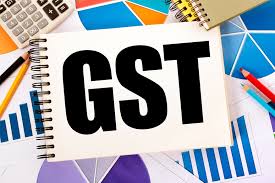Special GST Council meet likely in August after monsoon session of Parliament
A special Goods and Service Tax (GST) Council meeting is likely to be held in later part of August after the monsoon session of Parliament concludes on 13th of the month, to discuss revenue shortfall compensation mechanism for states beyond June 2022 when the five year assured period comes to an end.
The Council will likely debate on streamlining GST rates and inverted duty structure, tightening anti-evasion and fake input tax credit availed by scamsters to boost revenues.
During the special meeting with state finance ministers, many of whom (especially those from opposition ruled states) are demanding the assured compensation mechanism to continue for another five years, the Union finance ministry will give various scenarios after June 2022, a senior official told FE.
Recently, Union revenue secretary Tarun Bajaj indicated that dependence on cess or borrowing to bridge the shortfall might not be the right way forward. While it is up to the GST Council to deliberate as to how to ensure that states are compensated by greater revenues, Bajaj had said out of the box thinking is needed to boost revenues.
It will take 2-3 years to repay the Rs 1.1 lakh crore already borrowed in back-to-back loans in FY21 and another about Rs 1.6 lakh crore to be borrowed in FY22, to compensate states for the shortfall in assured GST revenues. These loans are to be repaid via cess proceeds. The cesses on demerit goods are being used for compensating states for revenue shortfall against the guaranteed annual growth of 14%. Any further extension in assured compensation mechanism might lead to fresh borrowings, creating additional liabilities requiring imposition of cess for much longer period.
The basic issue is the structural infirmities of GST as introduced in July 2017. Auto fuels, alcohol for human consumption and assorted other items were kept out of the regime. While weighted average rate was significantly below the revenue neutral rate estimated of 15.3% to start with, a series of rate cuts by the GST Council, including those aimed at boosting consumption and faltering economic growth, and the failure in plugging revenue leakages, widened the gap. The weighted average GST rate at present is seen at around 11.5%.
Earlier, the fitment panel of the Council had recommended continuation of the process of correcting inverted rate structures that dented the government revenue. The proposal to correct the inversions in regard to GST rates on footwear, ready made garments and fabrics and their inputs such as man-made fibres and yarns, would likely be taken up.
Punjab finance minister Manpreet Singh Badal had recently suggested to harmonise tax rates and exemptions so that opportunities of evasions are eliminated and tax credit chain simplified. Badal had also said discussions in the GST Council should take place on floor and band of rates within which states might be allowed to fix their respective SGST rates after June 2022.
On May 26, a group of ministers (GoM), led by Odisha finance minister Niranjan Pujari, was set up to examine the feasibility of levying GST on products such as pan masala and gutkha on the basis of the installed manufacturing capacity, rather than actual production/sales to check tax evasion.
Gross GST receipts came in at Rs 92,849 crore in June, ending the streak of over Rs 1 lakh crore collections reported for eight months in a row, yet it was a decent sum given lockdowns in many parts of the country were in place to tackle the second Covid wave. Closer monitoring against fake-billing, deep data analytics using data from multiple sources including GST, income-tax and customs IT systems and effective tax administration have also contributed to the steady increase in tax revenue over last few months. GST authorities have booked about 8,000 cases involving fake ITC of over Rs 35,000 crore in FY21 alone.
While the cess collections were enough to meet GST compensation requirement, Covid-19 pandemic has dented the revenues collections in FY21 and a shortfall against guaranteed level is seen in FY22 too. States reckon that the actual shortfall during the five years to June 2022 is much higher than estimated by the Centre at Rs 3.9 lakh crore or thereabouts (Rs 1.8 lakh crore in FY21 and Rs 2.1 lakh crore in FY22). West Bengal finance minister Amit Mitra recently wrote a letter to Union finance minister Nirmala Sithraman saying unpaid GST shortfall compensation to states is Rs 74,398 crore for FY21.
Source:https://www.financialexpress.com/economy/special-gst-council-meet-likely-in-august-after-monsoon-session-of-parliament/2290424/
Download our App to get knowledge updates::: https://play.google.com/store/apps/details?id=com.app.gstmitra
Join Our Telegram Channel for more updates:https://t.me/praveengst



Comments
Post a Comment